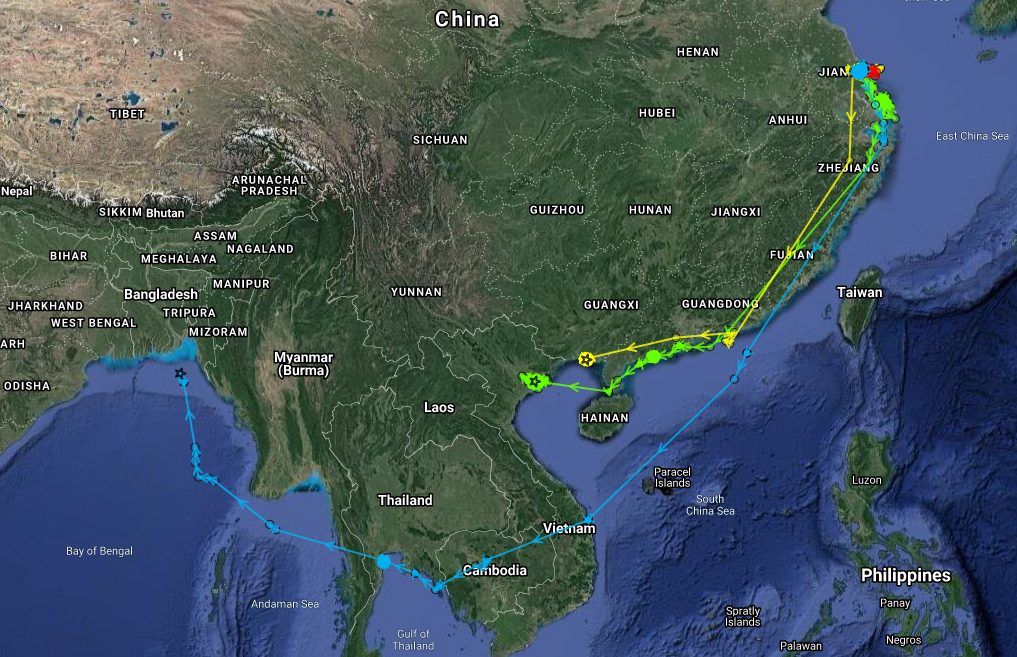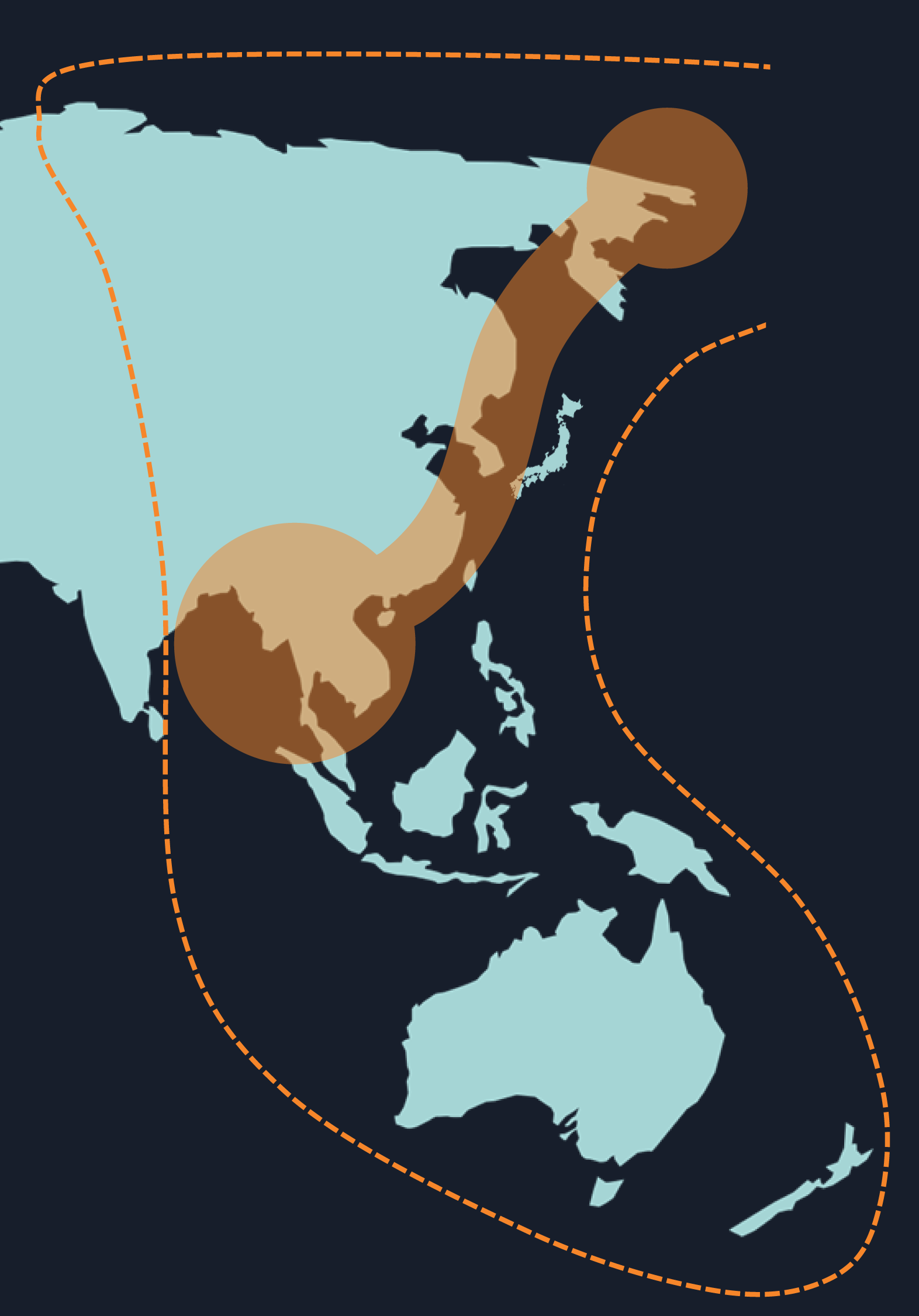← Back
Spoon-billed sandpipers, long-range travellers

Spoon-billed sandpiper are small shorebirds migrating long distances from Russia to the south of China, mostly along the coasts. Argos telemetry is helping to answer questions about those migrations as part of an international effort to save the species.
The spoon-billed sandpiper (Calidris pygmaea) is a small shorebird living on the Eastern most coasts of Asia. It breeds on Russian arctic tundra (Chukotsk and Kamchatka peninsulas), migrates South through Russia, Japan, North Korea, South Korea and the coast of China close to Shanghai to winter in south and south-east Asia (southern China, Bangladesh, Myanmar, Vietnam and Thailand). It thus can travel 8,000 km from its breeding grounds following the East Asian – Australasian “Flyway”.
It is one of the most threatened bird species, as are many wader species since wetland environments are degrading almost everywhere (more than 80% of East and Southeast Asia’s wetlands are classified as threatened). Its IUCN threat status was upgraded to Critically Endangered in 2008. It declined by 90% in the decade between 2000 and 2009 and was down to less than 250 breeding pairs in 2014. The two main threats seem to be intertidal habitat loss and degradation, and trapping on the wintering grounds, when young birds are disproportionately affected as they are thought to remain on their wintering grounds for their first 18 months.
More info about birds tracking
Since 2009, a wide range of people and organisations have taken action to halt the decline. A captive population has been established as a safe-guard against extinction. Signs are encouraging and the population decline is now much reduced.
Without knowing the location of most of the important breeding wintering and staging grounds, it is impossible to adequately protect the spoon-billed sandpiper. Satellite tracking is helping here, especially since a 2 g solar PTT tag was developed by Microwave Technology Inc. in 2016, small enough for tracking spoon-billed sandpipers. The tags were tested on dunlin in captivity to see how the birds reacted – they seemed to simply ignore the tag and the antenna.
Argos PTT Tags were fitted to three wild, adult spoon-billed sandpipers in October 2016 at the Tiaozini mudflats in Jiangsu, China (south-western corner of the Yellow Sea). Thirteen more have been fitted since (7 more in China and 6 in Russia).

Tracks of three bird fitted with 2-g Argos PTTs in Jiangsu province, China, in autumn 2019 (Credit WWT)
This has led to the discovery of new staging, wintering and breeding sites, including only the second known autumn moult site in the demilitarized zone of North Korea. The fact that birds migrating to Bangladesh, Myanmar, and Thailand do so overland has been confirmed. Some threats have also been addressed, thanks to the tracking, such as illegal mist netting at sites in southern China.
Argos telemetry is thus helping to answer questions about spoon-billed sandpiper migration that have intrigued conservationists for centuries. Satellite tracking work is continuing to identify more unknown sites, as part of an integrated international effort to save the species. The most important and challenging action is maintaining and protecting habitat at key sites, particularly stopover sites in the Yellow Sea. The fact that China banned intertidal reclamation in 2018 hopefully represents a transformative change in the fortunes of the spoon-billed sandpiper.
References and links
- https://www.eaaflyway.net/project/spoon-billed-sandpiper-task-force/
- https://www.facebook.com/sbstf/
- https://www.saving-spoon-billed-sandpiper.com
- https://twitter.com/hashtag/SaveSpoonie
Photo: one of the tracked bird, named EH, at Pak Thale, Thailand, 14 November 2019 (Credit Ayuwat (Ton) Jearwattanakanok)



